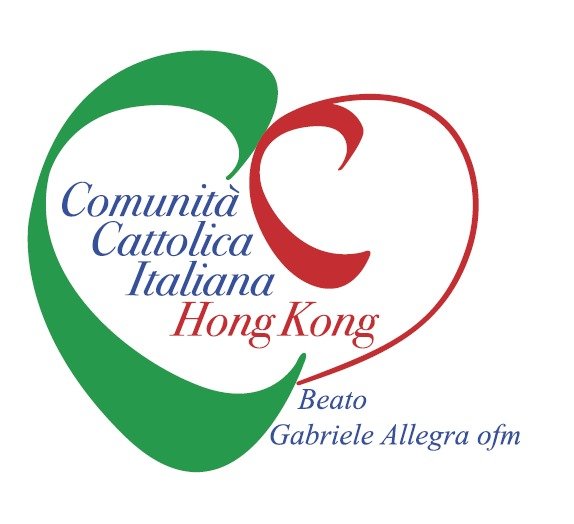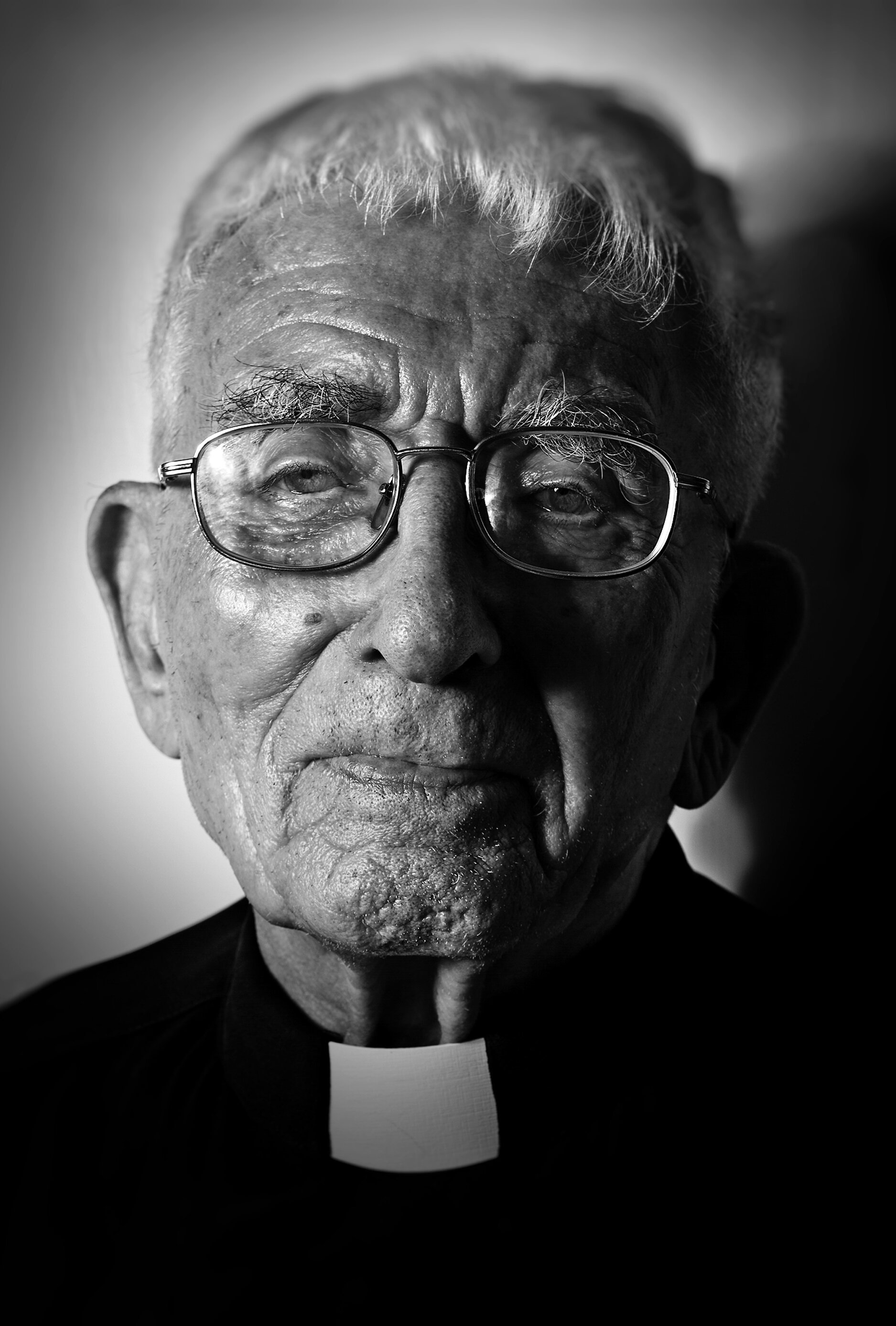Presentation from
Angelo Paratico
WE ITALIANS OF hong kong
Italy, as an independent nation, is younger than Hong Kong. It saw the light twenty years after the British landing in Sheung Wan. And yet, the Italian peninsula, like China, is a country with millennia of history. Therefore, both of our young nations are "gemmates" on ancient branches. This fact, in some way, must have formed our national characters, our habits and our way of looking at the past and the future. And this is perhaps what allows us Italians to feel loved and well integrated in the Hong Kong community.
After living with my wife in Hong Kong and attending Sunday Masses on Caine Road, once we return to Italy, we understand that something is missing. We lack the sparkling air of this European outpost in China. And yet, at the same time, we carry in our hearts a positive memory that gives us strength and hope for the future. To paraphrase Ernest Hemingway, we can say that Hong Kong is a "mobile party".
Hong Kong is strongly linked to Italy under various aspects. The best schools were founded by the Canossian Sisters, by the Fathers of the PIME, and by the Salesians. In this regard, you may read about the excellent and detailed essay written by his father, Gianni Criveller, on the book published by the Dante Alighieri Society of Hong Kong, entitled "Five Centuries of Italians in Hong Kong and Macao" in order to have a picture of all that Hong Kong and Macao must to our missionaries and our sisters.
As far as the secular part of our country is concerned, there are many people who have brought prestige to our small community, some of which are very important. Like Giuseppe Garibaldi, the hero of the two worlds, who landed there in 1852, coming from Peru. Or Filippo de Filippi, a distinguished naturalist, who disembarked from the Magenta piratregata, commanded by Vittorio Arminjon. They returned from Beijing and unfortunately, De Filippi, already feverish, died in Hong Kong on January 1867.
In 1925, the Neapolitan flyer Francesco De Pinedo with his two-seater Savoia S-16ter landed in the bay of Hong Kong. After Hong Kong, he proceeded to Shanghai, Tokyo, and Australia, and then came back, to go down the Tiber, to Rome.
The Italian ocean liners Conte Rosso and Conte Verde moved passengers from Genoa to Shanghai, via Singapore and Hong Kong. A little known fact is that these ships, before June 10, 1940, carried thousands of Jews fleeing Germany and Poland.
Oseo Acconci lived for many years in Macao and Hong Kong. He was an architect and a sculptor of value. Today, the family tradition is carried out by his son, Arnaldo. Paolo Borghese, son of Junio Valerio, was a skilled engineer and the electrification of the island of Hong Kong was designed by him.
There also passed the secret agent and adventurer, Amleto Vespa, a citizen of L'Aquila and perhaps a relative of Bruno Vespa, who wrote the book "Secret Agent of Japan" which was published in Great Britain and the United States. He caused quite a stir but the Japanese, notoriously lacking in humour, when they managed to catch him in Shanghai on 1941, shot him.
After the war, many Italians transited from Hong Kong — statesmen, writers and intellectuals. In 1970, Pope Paul VI arrived. He spent a full day, with just enough time to preside over a mass and then depart by plane from Kai Tak airport. The doors of China, in those years in the throes of chaos, remained closed for him.
Many still remember Tiziano Terzani's visits to the FCC and up and down on the Star Ferry, as he dressed in long white dresses and donned a handsome beard, which made him look like an Indian guru.
Before and after the founding of Hong Kong, which took place on 1841, many Italians came or lived here. They were always remarkable and distinguished characters of high caliber. For concision, I will limit myself to mentioning just two of them, which are among my favourites. Both are very representative of our community. One was Eugenio Zanoni Volpicelli, Consul in Hong Kong from 1899 to 1919, and the other was the Salesian Gaetano Nicosia (3 April 1915, San Giovanni la Punta - 6 November 2017, Hong Kong).
You can hear about Father Nicosia in the documentary below:
Eugenio Zanoni Volpicelli
Eugenio Zanoni Volpicelli was born in Naples in 1856, and studied physics and mathematics there. Taking advantage of a scholarship, he studied Persian and Chinese in the famous Eastern University of the City of Naples. He first worked in China as an accountant in 1881, but after a mere three years, in 1884, his linguistic skills led him to be employed by Italy during the signing of a commercial treaty with Korea. Later, his diplomatic and linguistic talent, led to his promotion by the Chinese imperial government as assistant to the viceroy Li Hunchang, whom Volpicelli joined during the negotiations between China and Vietnam.
In 1886 he traveled to Russia and learned the language. The result of that journey is a book in English, published in London, on the war between Russia and China, where he used the pseudonym of "Vladimir". We find that in the years that followed in Shanghai, he published new texts in French, Chinese and English. In 1897 he returned to Russia again and published a new book, also published in London, entitled Russia on the Pacific and the Siberian Railway with maps and photos, a text that can still be historically relied upon today.
His sagacity did not escape the consular representatives of Beijing, first of all the Marquis Salvago Raggi, who had him appointed Consul of Italy for Hong and Macao. In 1900, during the Boxer uprising, taking advantage of his friendship with Li Hungchang, he did his best to maintain peace in southern China. In 1904, during the Russo-Japanese war, we find him with our ship Elba, among the rescuers of the Russian sailors of the cruiser Varyag, which sank on its own in Incheon, Korea. He met Sun Yat-Sen and Chiang Kai-shek, and during those tumultuous years, became a staple for all the Italians who visited the Far East. He was often consulted by our journalists and by the businessmen passing by; Luigi Barzini often quoted him in his reports. Between 1915 and 1919, he studied in the University of Hong Kong, where he graduated with honors in ... gynecology, perhaps to treat a disease of his wife. In the meantime, he did not slow down his activity as a writer. He continued to published an English text on the history of the Russian-Japanese war, drawing information from original Chinese and Japanese sources; this essay often appears quoted in modern works dealing with this subject. Vegetarian, healthy and always on the move, she translated part of Dante Alighieri's "Divine Comedy" into Chinese and, notably, translated Cesare Beccaria's book "Dei Delitti e delle Pene" into Chinese.
After leaving the post of Consul in Hong Kong in 1919 and being named Commander of the Order of Saints Maurice and Lazarus, Eugenio Zanoni Volpicelli left for a mystical search of the afterlife. He visited various Buddhist temples that stood on Chinese rivers using his small boat, which he called "Procida" and since the area was lacking waterways, was loaded on the train. He accompanied our Catholic missionaries whom he met in China. Now in his old age, he left Shanghai and moved to Nagasaki, Japan where he died in 1936. In modern Italy, Volpicelli remains almost unknown, except within a small biography written by Eric Salerno. His tomb was damaged by the 1945 atomic explosion, but an anonymous Chinese visitor has provided the money to restore it.
Photo of Margot Errante
Gaetano Nicosia
Gaetano Nicosia's father was killed in the trenches during the First World War, leaving his mother alone to raise children. He grew up in Sicily where, one day, leafing through a Salesian magazine that showed Chinese lepers, whom he felt the need to help. For this reason, he entered the Salesian order founded by Don Bosco and subsequently asked to be sent abroad to assist the lepers. He arrived in Hong Kong in 1935, and then moved to Macau. Unfortunately, his superiors did not allow him to enter China because he was too frail.
When the Second World War broke out in 1941, Macau was spared from real fighting, but people suffered enormously as the Japanese army controlled the supply of rice. After the war, Nicosia had an agricultural school built in Coloane for the orphans and refugees who moved from Mainland China. In 1963, the Salesian Mission for the Hansenians began and he founded the Missão de Nossa Senhora das Dores in Coloane. In 1984, he also founded the Escola D. Luis Versiglia de Ká Hó near that village.
About a hundred lepers lived in the leprosarium of Ká Hó, on the island of Coloane, but they were left to themselves and in dire need of care. The situation was so hopeless that some of them committed suicide, which was aided by the fact that the colony was situated near a cliff, making it easy to jump to one’s death.
Between 1963 and 1980, Nicosia lived in Ká Hó along with the lepers he cared for. The village was isolated during the time and could only be reached by boat. However, even the boatmen refused to land the supplies and instead, these had to be pulled ashore with a pontoon. With his arrival, the village underwent a drastic transformation: real doctors and nurses were called to visit the infected people; the feeding became adequate; the clean and tidy environment and the huts were completely restored. Everyone was given a task so as not to become inactive; the inhabitants of the colony became carpenters, mechanics and drivers. It was then that the village became self-sufficient, with a large water tank and electricity.
In 1970, according to a report published by the Catholic Herald, forty people had been healed and reintegrated into society, and seventy others remained in the village of Ká Hó. Father Nicosia tried to find work and financial support for those who had been completely healed and were leaving the colony. But, unfortunately, some of the marginalized remained and some of them, once they left, were not accepted into their families. For this reason, a good number of them asked to be readmitted. One of them said to Fr. Nicosia: "This place has been transformed from a Hell into a Paradise!" Other people started going to the island in order keep Father Nicosia company. Bishop Tavares, for example, went there for vacation, in order to meditate and pray. As for Father Allegra, translator of the Bible into Chinese, was also a Sicilian and a great friend of our Nicosia Additionally, the Canossian Sisters also offered their help to Father Nicosia.
To commemorate the legacy of the Italian Catholic Community, the Italian architect, Oseo Acconci, also built a church dedicated to Our Lady of Sorrows, situated on the edge of the village of Ká Hó. A famous Italian sculptor, Francesco Messina, donated a wonderful bronze crucifix that still dominates the facade of the church. Today, it has been restored by the Macau government and can be visited. Fr. Gaetano Nicosia has never been afraid of being infected, he has kissed and embraced his lepers, empathising with them in their daily life and remaining at their side, always full of optimism and hope in Divine Providence. After Macao, he went to China and founded schools and hospitals, but this chapter of his life is still kept confidential, and perhaps, will be told in future years.
Angelo Paratico
A journalist, writer, and member of the Hong Kong Italian Catholic Community.



